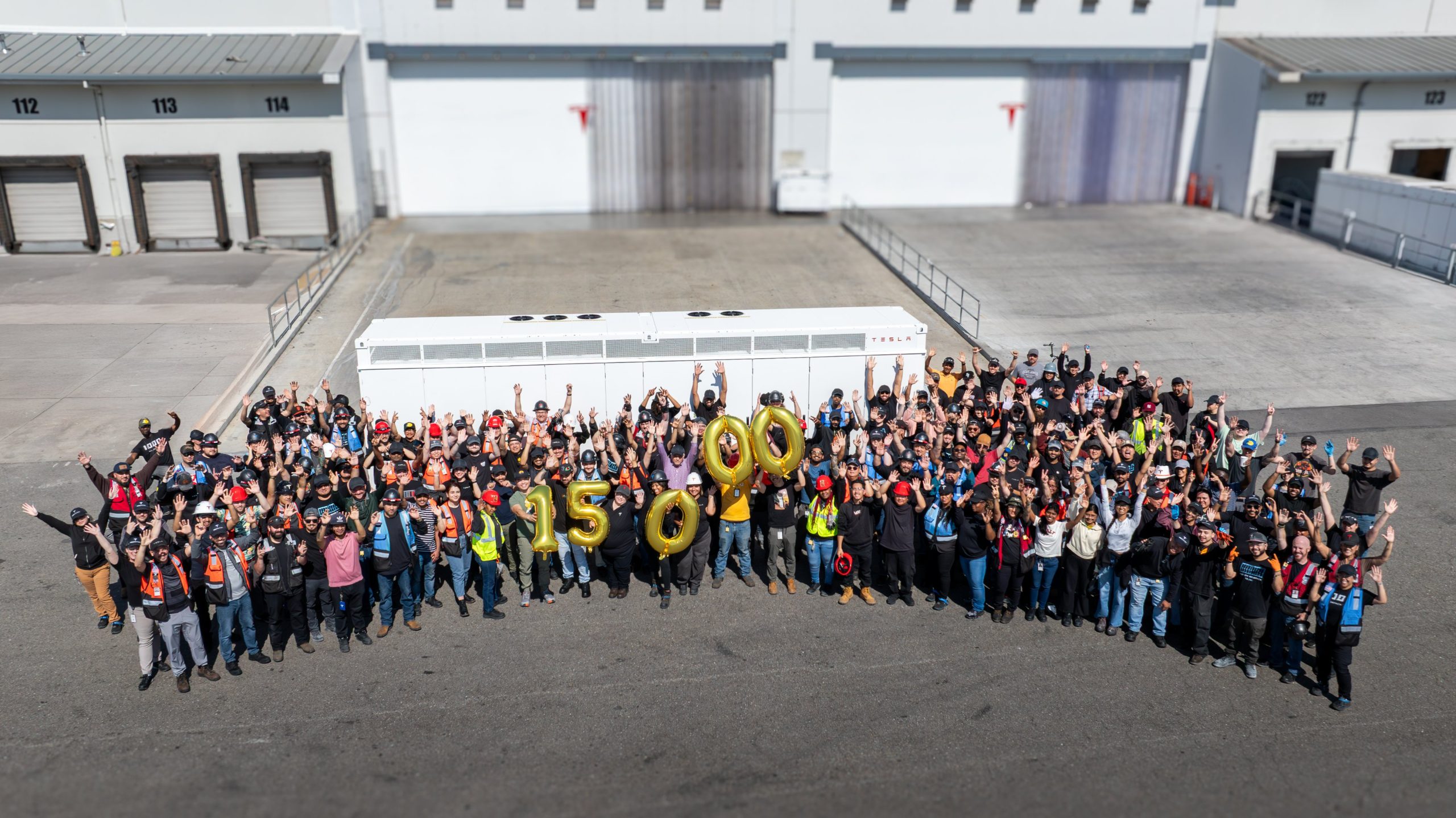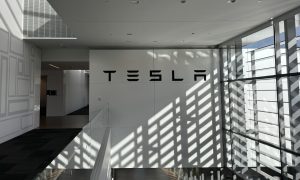

Energy
CA’s solar tax supporters are trying to run a “wealthy vs disadvantaged” narrative: It doesn’t have to be
A look at the California Public Utilities Commission’s (CPUC) ‘s 204-page proposal for its proposed new net metering rules (NEM 3.0), as well as the comments of the initiative’s supporters, shows something interesting. Supporters of NEM 3.0 are arguing that the current net metering rules, NEM 2.0, are practically an assault on disadvantaged households and a multi-billion subsidy for wealthy homeowners.
This narrative could be found all over the CPUC’s NEM 3.0 proposal. In the document, the commission argued that the existing net energy metering tariff “negatively impacts non-participating customers; is not cost-effective; and disproportionately harms low-income ratepayers” since homeowners without solar are being shouldered with the price of maintaining the grid. A study of the state’s policies further noted that California ratepayers spent about $3 billion a year to support net metering.
As critics of the initiative, such as Tesla and other renewable companies and organizations in the state, launched efforts to combat the NEM 3.0 proposal, organizations supporting the CPUC’s proposal have adopted a pretty similar stance. Affordable Clean Energy for All, a coalition of groups that include open NEM 3.0 backers like Pacific Gas & Electric, Southern California Edison, and San Diego Gas & Electric, has been particularly active in pushing the idea that NEM 2.0 takes from the disadvantaged and gives to the wealthy.
Kathy Fairbanks, a spokeswoman from Affordable Clean Energy for All, highlighted this recently. “It’s hypocritical that people who claim to want to help disadvantaged communities are advocating to keep a regressive policy that takes from the poor and gives to publicly-traded companies to fatten their profits, increase their stock price and shareholder wealth,” she said.
But inasmuch as a “rich vs. poor” concept is compelling, such a simplistic narrative hardly addresses the issues that critics are bringing up about NEM 3.0. While there is some argument in the idea that companies like Tesla are fighting the proposal since it is involved in the residential solar business, the fact remains that rooftop solar in California is growing fastest in working and middle-class neighborhoods. Not millionaires in their massive mansions — just regular working individuals that are learning the advantages and practicality of renewable energy.
Solar Rights Alliance Director Dave Rosenfeld mentioned this in a statement last month, as critics of NEM 3.0 delivered over more than 120,000 public comments to the California Public Utilities Commission (CPUC) and Governor Gavin Newsom. “This is where the rubber hits the road on blackouts, rising electricity bills, and air pollution. The correct path is to help millions more working and middle-class people get solar so we can keep up our progress and reject the utility profit grab that threatens to take us backwards,” Rosenfeld said.
Contrary to the idea that net metering takes from the disadvantaged and gives to the wealthy, an analysis by national grid modeling experts Vibrant Clean Energy has estimated that the continued growth of distributed energy resources (DER) such as rooftop, community solar, and energy storage, could actually save California ratepayers $120 billion over the next 30 years. “What our model finds is that when you account for the costs associated with distribution grid infrastructure, distributed energy resources can produce a pathway that is lower cost for all ratepayers and emits fewer greenhouse gas emissions,” Vibrant Clean Energy CEO Dr. Christopher Clack said.
While the CPUC seems very determined to ensure that NEM 3.0 is approved, the voices against the initiative are growing louder. Apart from Tesla CEO Elon Musk, who called the proposal “bizarre” and “anti-environment,” other notable personalities have expressed their criticism of NEM 3.0 online. These include, interestingly enough, two actors who played Marvel’s The Incredible Hulk on the big screen, Edward Norton and Mark Ruffalo, as well as basketball legend Bill Walton. California Governor Gavin Newsom also seems a bit more open-minded than the CPUC, noting that there’s more work to be done in the NEM 3.0 proposal.
“That draft plan that was recently released, I just had a chance to review, and I’ll say this about the plan: We still have some work to do… Do I think changes need to be made? Yes, I do,” Newsom recently said.
The California Public Utilities Commission may vote on its NEM 3.0 proposal as early as January 27, 2022.
Don’t hesitate to contact us with news tips. Just send a message to tips@teslarati.com to give us a heads up.
Energy
Tesla Lathrop Megafactory celebrates massive Megapack battery milestone
The Tesla Megapack is the backbone of Tesla Energy’s battery deployments.

The Tesla Lathrop Megafactory recently achieved a new milestone. As per the official Tesla Megapack account on X, the Lathrop Megafactory has produced its 15,000th Megapack 2 XL battery.
15,000 Megapack Batteries
Tesla celebrated the milestone with a photo of the Lathrop Megafactory team posing with a freshly produced Megapack battery. To commemorate the event, the team held balloons that spelled out “15,000” as they posed for the photo.
The Tesla Megapack is the backbone of Tesla Energy’s battery deployments. Designed for grid-scale applications, each Megapack offers 3.9 MWh of energy and 1.9 MW of power. The battery is extremely scalable, making it perfect for massive energy storage projects.
More Megafactories
The Lathrop Megafactory is Tesla’s first dedicated facility for its flagship battery storage system. It currently stands as the largest utility-scale battery factory in North America. The facility is capable of producing 10,000 Megapack batteries every year, equal to 40 GWh of clean energy storage.
Thanks to the success of the Megapack, Tesla has expanded its energy business by building and launching the Shanghai Megafactory, which is also expected to produce 40 GWh of energy storage per year. The ramp of the Shanghai Megafactory is quite impressive, with Tesla noting in its Q1 2025 Update Letter that the Shanghai Megafactory managed to produce over 100 Megapack batteries in the first quarter alone.
Tesla Energy’s Potential
During the first quarter earnings call, CEO Elon Musk stated that the Megapack is extremely valuable to the energy industry.
“The Megapack enables utility companies to output far more total energy than would otherwise be the case… This is a massive unlock on total energy output of any given grid over the course of a year. And utility companies are beginning to realize this and are buying in our Megapacks at scale,” Musk said.
Energy
Tesla Megapacks powers the xAI Colossus supercomputer
Tesla Megapacks step in to stabilize xAI’s Colossus supercomputer, replacing natural gas turbines. Musk’s ventures keep intertwining.

Tesla Megapack batteries will power the xAI Colossus supercomputer in Memphis to ensure power stability. The collaboration between Tesla and xAI highlights the synergy among Elon Musk’s ventures.
The artificial intelligence startup has integrated Tesla Megapacks to manage outages and demand surges, bolstering the facility’s reliability. The Greater Memphis Chamber announced that Colossus, recently connected to a new 150-megawatt electric substation, is completing its first construction phase. This transition addresses criticism from environmental justice groups over the initial use of natural gas turbines.
“The temporary natural gas turbines that were being used to power the Phase I GPUs prior to grid connection are now being demobilized and will be removed from the site over the next two months.
“About half of the operating turbines will remain operating to power Phase II GPUs of xAI until a second substation (#22) already in construction is completed and connected to the electric grid, which is planned for the Fall of 2025, at which time the remaining turbines will be relegated to a backup power role,” the Chamber stated.
xAI’s rapid development of Colossus reflects its ambition to advance AI capabilities, but the project has faced scrutiny for environmental impacts. The shift to Megapacks and grid power aims to mitigate these concerns while ensuring operational continuity.
The Megapack deployment underscores the collaboration among Musk’s companies, including Tesla, SpaceX, Neuralink, and The Boring Company. Tesla appears to be the common link between all of Musk’s companies. For example, The Boring Company built a tunnel in Giga, Texas. In addition, Musk has hinted at a potential collaboration between the Tesla Optimus Bot and Neuralink. And from January 2024 to February 2025, xAI invested $230 million in Megapacks, per a Tesla filing.
Tesla Energy reported a 156% year-over-year increase in Q1 2025, deploying 10.4 GWh of storage products, including Megapacks and Powerwalls. Tesla’s plans for a new Megapack factory in Waller County, Texas, which is expected to create 1,500 jobs in the area, further signal its commitment to scaling energy solutions.
As xAI leverages Tesla’s Megapacks to power Colossus, the integration showcases Musk’s interconnected business ecosystem. The supercomputer’s enhanced stability positions xAI to drive AI innovation, while Tesla’s energy solutions gain prominence, setting the stage for broader technological and economic impacts.
Energy
Tesla Energy celebrates one decade of sustainability
Tesla Energy has gone far since its early days, and it is now becoming a progressively bigger part of the company.

Tesla Energy recently celebrated its 10th anniversary with a dedicated video showcasing several of its milestones over the past decade.
Tesla Energy has gone far since its early days, and it is now becoming a progressively bigger part of the company.
Tesla Energy Early Days
When Elon Musk launched Tesla Energy in 2015, he noted that the business is a fundamental transformation of how the world works. To start, Tesla Energy offered the Powerwall, a 7 kWh/10 kWh home battery system, and the Powerpack, a grid-capable 100 kWh battery block that is designed for scalability. A few days after the products’ launch, Musk noted that Tesla had received 38,000 reservations for the Powerwall and 2,500 reservations for the Powerpack.
Tesla Energy’s beginnings would herald its quiet growth, with the company later announcing products like the Solar Roof tile, which is yet to be ramped, and the successor to the Powerwall, the 13.5 kWh Powerwall 2. In recent years, Tesla Energy also launched its Powerwall 3 home battery and the massive Megapack, a 3.9 MWh monster of a battery unit that has become the backbone for energy storage systems across the globe.
Key Milestones
As noted by Tesla Energy in its recent video, it has now established facilities that allow the company to manufacture 20,000 units of the Megapack every year, which should help grow the 23 GWh worth of Megapacks that have already been deployed globally.
The Powerwall remains a desirable home battery as well, with more than 850,000 units installed worldwide. These translate to 12 GWh of residential entry storage delivered to date. Just like the Megapack, Tesla is also ramping its production of the Powerwall, allowing the division to grow even more.
Tesla Energy’s Role
While Tesla Energy does not catch as much headlines as the company’s electric vehicle businesses, its contributions to the company’s bottom line have been growing. In the first quarter of 2025 alone, Tesla Energy deployed 10.4 GWh of energy storage products. Powerwall deployments also crossed 1 GWh in one quarter for the first time. As per Tesla in its Q1 2025 Update Letter, the gross margin for the Energy division has improved sequentially as well.
-

 Elon Musk1 week ago
Elon Musk1 week agoTesla investors will be shocked by Jim Cramer’s latest assessment
-

 Elon Musk3 days ago
Elon Musk3 days agoElon Musk confirms Grok 4 launch on July 9 with livestream event
-

 Elon Musk15 hours ago
Elon Musk15 hours agoxAI launches Grok 4 with new $300/month SuperGrok Heavy subscription
-

 News7 days ago
News7 days agoTesla Model 3 ranks as the safest new car in Europe for 2025, per Euro NCAP tests
-

 Elon Musk2 weeks ago
Elon Musk2 weeks agoA Tesla just delivered itself to a customer autonomously, Elon Musk confirms
-

 Elon Musk1 week ago
Elon Musk1 week agoxAI’s Memphis data center receives air permit despite community criticism
-

 Elon Musk2 weeks ago
Elon Musk2 weeks agoTesla’s Omead Afshar, known as Elon Musk’s right-hand man, leaves company: reports
-

 News2 weeks ago
News2 weeks agoXiaomi CEO congratulates Tesla on first FSD delivery: “We have to continue learning!”
















